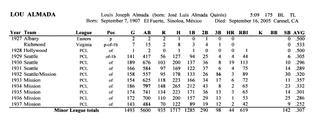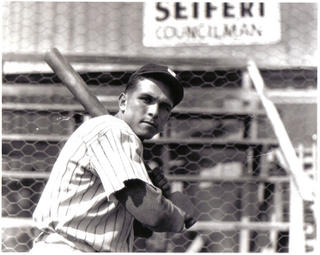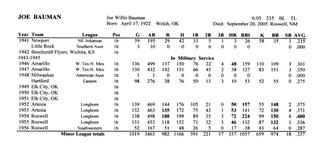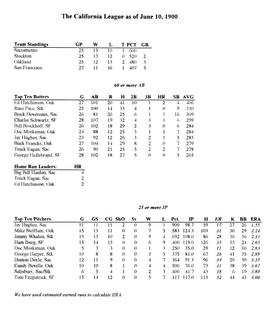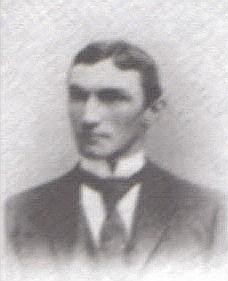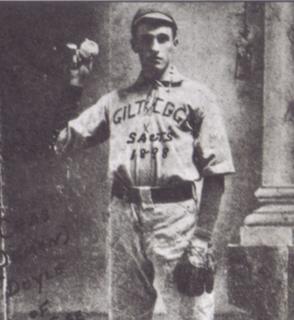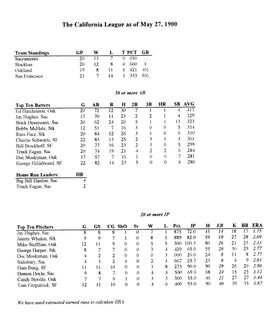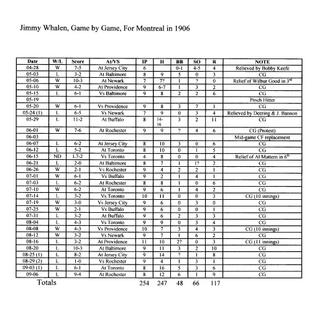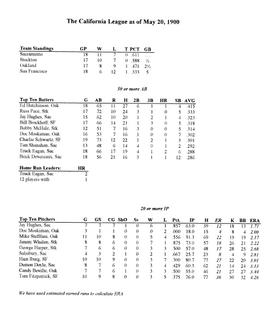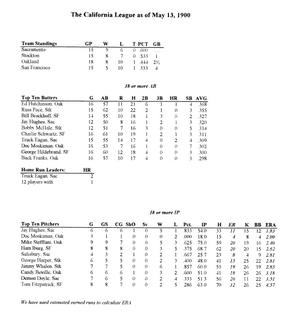From Brockton to Brantford: When Amby Kane took the Boys North.
The late Tom Shea, one of SABR’s founding members, once told me that the trick to doing pre-1920 biographical research was to look closely at the team’s manager, for, more than likely, he brought along a few of the players from his own home town.
The city of Brockton, Massachusetts is a prime example of the Tom’s theory. The major league example is Bill McGunnigle, a native of the Shoe City, and his time at the helm of Louisville in the National League. McGunnigle used Frank Shannon in 1896 and Billy McGee in 1897. Both were Boston boys who had starred for the Brockton entry in the New England League.
The minor league example is Ambrose P. Kane and his connection with the Canadian League. Formed in the spring of 1911 as a Class D circuit, the Canadian League had teams in Berlin, London, Hamilton, St. Thomas, Guelph and Brantford, Ontario. The first five managerial spots all went to Canadians and by the end of April only the Brantford Red Sox had yet to name its pilot. The final two applicants were F. M. Letcher, the ex-manager of Regina in the Western Canada League, and Amby Kane of Whitman, Massachusetts, a small town located adjacent to Brockton. The Brantford management opted for Kane.
Kane was born in New Hampshire and just exactly when his family moved to Whitman is unknown but from 1895-1900 Amby was a member of the Whitman Phoenix team, one of the strongest semipro clubs in southeastern Massachusetts. Kane, then a pitcher, received a tryout with the original Boston American League team in 1901 and at least one team photo of that club identifies “Kane” as the man standing next to Cy Young.
From 1901-1909 Kane, after hurting his arm, made the rounds as a New England League outfielder, making stops in Lewiston, Maine; Dover, Concord and Manchester, New Hampshire; and Worcester, Fall River, Lowell and Brockton, Massachusetts. He also spent time in the Connecticut League.
The Brantford Expositor, on May 2, 1911, noted the arrival of their new manager:
“The Manager, who arrived here yesterday, impressed the officers of the club
Who met him as being a man who will be able to deliver the goods. Cane (sic) has already secured a line of men from Massachusetts.”
And from Massachusetts they came. Over the next three years the Brantford roster was made up of players from eastern Massachusetts, specifically the great Brockton area. Some had previous pro experience, but for most this was their first stop in organized ball.
First on the list was 18-year-old Mal Barry, a Brockton native who became Brantford’s first baseman and leading hitter. He led the 1911 Canadian League in hits (141) and was second in the batting race, finishing at .357, just behind Lou Bierbauer Jr.’s .367. Barry hit .315 for Brockton in the 1912 Class B league and then went to spring training with the New York Americans in Bermuda in 1913. It was Mal’s misfortune to end up with the New Yorkers, for Hal Chase was in his prime, and manager Frank Chase also played first base. Barry never played a single major league game but had seasons where he led the International League (1914), the PCL (1916) and the American Association (1917) in fielding percentage for first basemen.
Brantford’s shortstop in 1911 and 1912 was Lou Courtney. Lou was from Randolph, Massachusetts, just north of Brockton. He had played for Biddeford in the Maine State League in 1909 and had signed to play for Portland in the PCL before misfortune set in. Stepping off a streetcar early in 1910, he was hit by an automobile. Injuries from that accident kept him out of the game for a full season before Amby brought him north. Lou’s best season in Brantford was 1912 when he hit .335 and stole 32 bases. His highest level in pro ball was a short stint with Jersey City in the International League in 1913.
At third base was Del Orcutt who came to Brantford from Abington, Massachusetts and Brown University after hitting .063 in a handful of games for Brockton in 1910. Blossoming under Amby’s guidance, Del became Brantford’s best all-around player, hitting .294 with 24 steals in 1911. At the end of the season he was drafted by the Detroit Tigers.
Two Brantford players came from Weymouth, Massachusetts. Ernie “Chub” Coose was a shortstop when not pitching. He hit .292 in 1912 and .261 in 1913. In 1912 he was 14-11 from the hill, topping the staff with 237 innings pitched. Ralph “Buster” Burrill played for Brantford the longest, staying through the 1915 season, copping the batting title that year with a solid .344 mark – significant since the circuit had risen by then to Class B status. Ralph was the nephew of the original Buster – Frank “Buster” Burrill – whose career consisted of brief major league time in the 1890s but close to 20 years for minor league service. Most of Frank’s time was spent in the New England League where in 1899 he was a teammate of Christy Mathewson’s at Taunton.
Catching from Brantford from 1911-1915 was Matthias A. “Matty” Lamond of Lawrence, Massachusetts. Lamond had a tryout with Brockton in 1910 but was deemed to slow for Class B ball. He never hit for a high average but was an excellent defensive catcher.
Not to be outdone by the younger team he put together, Amby Kane hit close to .300 in both 1911 and 1912, leading the circuit with 7 homers in 1911.
The trek north continued for three seasons. Along the way, John McGill, Jack Neafsey, Rafe Kelliher, Casey Cassavane, Amme Plausse, Henry Gero and Johnny Nelson all appeared in Brantford uniforms. All came from the Brockton area, and all left some type of mark in the New England League. Even young Tim Spillane, the captain of the 1913 Brockton high school team played for Brantford. Though it was his first time away from home and he was hobbled by a leg injury, he was a crowd favorite in Brantford despite a .063 batting average in just seven games.
Al least two players from Kane’s Brantford teams played in the major leagues. Brockton, circa 1910, has a working arraignment with the Brooklyn Dodgers and four Brockton players from that period – Simmy Murch, Pem Finlayson, Eddie McLane and Tommy Catterson – made brief Brooklyn appearances. Catterson was the 1908 New England batting champ and appeared in 28 National League games in 1908 and 1909. He showed up in Brantford for a short time in the middle of the 1912 season, probably as a favor for Amby, hitting .277 in 12 games. Al Tesch, a Brantford middle infielder in 1913 was a member of the 1915 Brockton Colonial League team and appeared briefly in the Federal League.
Kane’s best finish in Brantford was second place in 1912. The club started off poorly in 1913 and Amby was fired in August.
In 1914 Kane managed the Taunton, Massachusetts team in the Colonial League, bringing along several of his Brantford players. He also started off his nephew – Frank Kane – on a long pro career that saw stops with the Brooklyn Feds in 1915 and the New York Yankees in 1919. Throughout most of the 1920s Frank Kane was a top International League flychaser, leading the circuit in stolen bases in 1921, and hitting .348 with 112 RBI in 1924.
Amby’s boys had one last hurrah in organized baseball. That came in 1928 when Lou Courtney managed the Brockton New England League team. Amby and Mal Barry owned stock in the team and Frank Kane closed out his career in the Brockton outfield.
Frank Kane became an accountant and part-time scout for the Cleveland Indians. He coached Peter Marciano, the younger brother of Brockton heavyweight boxing champ Rocky Marciano. Peter Marciano caught two seasons in the Braves system. Frank Kane died in Brockton in 1962. Mal Barry went into the shoe business in Brockton, dying there in 1960. Lou Courtney became a highway surveyor and engineer. He remained active in the amateur Cape Cod League and the local Brockton baseball scene, helping to shape the careers of Elbie Fletcher and Bill Chamberlain, two 1930s major leaguers from Milton, Massachusetts. Courtney died in Brockton in 1967. Lamond died in 1940, Coose in 1956 and Burrill in 1973. Amby Kane, their manager, passed away in Brockton on November 21, 1936.
By Dick Thompson
